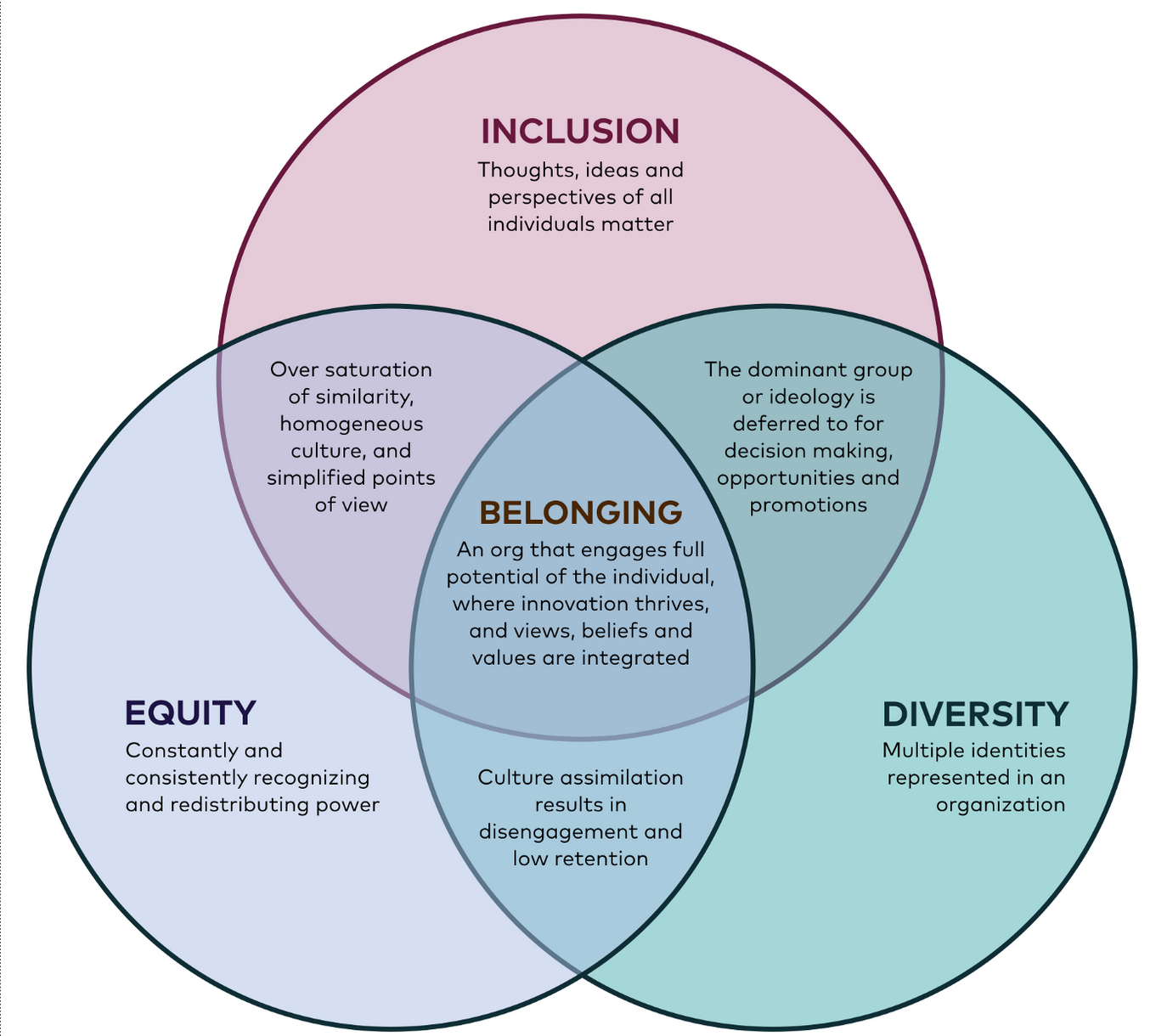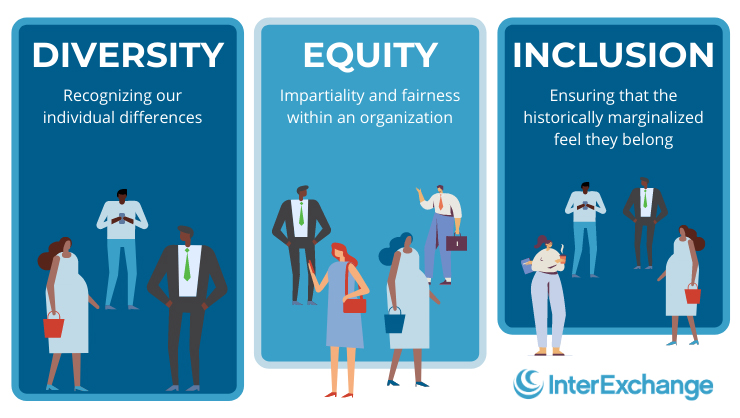Equity and diversity in education are essential for fostering inclusive learning environments that empower all students to succeed. Embracing diversity and promoting equity means recognizing and valuing the unique experiences, perspectives, and identities of all learners, creating a sense of belonging and respect.
Research consistently demonstrates the positive outcomes of equity and diversity in education. When students feel valued and respected, they are more engaged, develop critical thinking skills, and achieve higher academic outcomes. Furthermore, diverse classrooms promote understanding, empathy, and global competence, preparing students to thrive in an increasingly interconnected world.
Definition and Importance of Equity and Diversity in Education
Equity and diversity in education encompass the creation of inclusive learning environments where all students have an equal opportunity to succeed, regardless of their background or identity. Equity focuses on providing every student with the resources and support they need to thrive, while diversity celebrates the unique perspectives and experiences that each student brings to the classroom.
Significance of Equity and Diversity
Embracing equity and diversity in education is crucial for several reasons. Firstly, it promotes social justice by ensuring that all students have access to quality education, regardless of their race, gender, socioeconomic status, or other factors. Secondly, it enhances the learning experience for all students by exposing them to diverse perspectives and ways of thinking.
Thirdly, it prepares students for success in a globalized world where they will encounter and work with people from all walks of life.
Benefits of Equity and Diversity in Education
Equity and diversity in education provide numerous benefits that contribute to the overall success and well-being of students. Research has consistently shown that educational environments that embrace equity and diversity lead to positive outcomes for all learners.
One of the most significant benefits of equity and diversity is enhanced student engagement. When students feel valued and respected for their unique perspectives and backgrounds, they are more likely to participate actively in the learning process. They feel a sense of belonging and are more motivated to contribute to classroom discussions, ask questions, and engage with their peers.
Ensuring equity and diversity in education is paramount to fostering inclusive and thriving learning environments. One shining example of this commitment is the Mott Haven Educational Campus , a beacon of educational excellence in the Bronx. By providing equitable access to high-quality education and empowering students from diverse backgrounds, this campus embodies the principles of equity and diversity, paving the way for a more just and equitable society.
Critical Thinking
Equity and diversity also foster critical thinking skills in students. By exposing learners to different perspectives and experiences, they develop a broader understanding of the world and become more adept at analyzing and evaluating information. They learn to challenge assumptions, consider multiple viewpoints, and make informed decisions based on evidence.
Academic Achievement
Furthermore, equity and diversity in education have been linked to improved academic achievement. Studies have shown that students who attend diverse schools perform better on standardized tests, have higher graduation rates, and are more likely to pursue higher education. This is because they benefit from exposure to a wider range of ideas, perspectives, and problem-solving approaches, which enhances their cognitive abilities and academic skills.
Barriers to Equity and Diversity in Education
Achieving equity and diversity in education faces significant barriers, stemming from systemic and institutional structures that perpetuate inequality. These barriers hinder the full participation and success of diverse student populations, limiting their access to quality education and equitable outcomes.
One of the most pervasive barriers is bias and discrimination. Implicit and explicit biases held by educators, administrators, and policymakers can lead to unequal treatment, expectations, and opportunities for students from marginalized groups. Discrimination based on race, gender, socioeconomic status, or other factors creates a hostile and unwelcoming learning environment, affecting students’ academic performance, self-esteem, and sense of belonging.
Unequal Access to Resources, Equity and diversity in education
Another significant barrier is unequal access to resources. Students from low-income families and underserved communities often attend schools with fewer resources, including qualified teachers, up-to-date facilities, and extracurricular activities. These resource disparities contribute to educational inequality, as students from more affluent backgrounds have access to better educational opportunities and outcomes.
Equity and diversity in education are crucial for creating inclusive learning environments that foster growth and success for all students. If you’re passionate about making a difference in the lives of young people and are seeking a fulfilling career in education, consider exploring bend oregon education jobs.
With a strong commitment to equity and diversity, these positions offer opportunities to contribute to the creation of equitable and inclusive learning spaces that empower all students to reach their full potential.
Strategies for Promoting Equity and Diversity in Education
Promoting equity and diversity in education is crucial for creating inclusive and empowering learning environments for all students. Effective strategies can involve a range of approaches, from curriculum reform to professional development for educators.
Collaboration among teachers, administrators, and policymakers is essential for implementing successful strategies. Teachers play a vital role in creating inclusive classrooms where all students feel valued and respected. Administrators provide support and resources to ensure that equity and diversity are prioritized throughout the school.
Policymakers set policies that promote equity and diversity, such as funding for diversity initiatives and professional development opportunities.
Curriculum Reform
Curriculum reform is essential for promoting equity and diversity in education. By incorporating diverse perspectives and experiences into the curriculum, students can develop a deeper understanding of the world around them and challenge stereotypes. This can involve:
- Including diverse authors and perspectives in textbooks and reading materials
- Incorporating lessons on social justice, diversity, and inclusion
- Providing opportunities for students to explore their own identities and cultures
Professional Development for Educators
Professional development for educators is crucial for creating inclusive and equitable classrooms. Educators need to be equipped with the knowledge and skills to support students from diverse backgrounds and create learning environments that are welcoming and respectful.
Equity and diversity in education are essential for creating inclusive and equitable learning environments. Michigan Educational Credit Union Livonia Michigan recognizes this and provides resources to support educators in promoting equity and diversity in their classrooms. Through initiatives like scholarships and professional development programs, they empower educators to create more inclusive learning experiences for all students.
Professional development opportunities can include:
- Training on culturally responsive teaching practices
- Workshops on diversity and inclusion
- Mentoring programs that connect educators with experienced colleagues who can provide support and guidance
School Climate and Culture
School climate and culture play a significant role in promoting equity and diversity. When schools are welcoming and inclusive, students are more likely to feel safe and supported. This can involve:
- Creating a school environment that is free from discrimination and harassment
- Promoting a culture of respect and understanding among students and staff
- Encouraging students to participate in extracurricular activities and clubs that promote diversity and inclusion
Collaboration with Community Organizations
Collaboration with community organizations can provide valuable resources and support for promoting equity and diversity in education. Community organizations can offer:
- Mentoring and tutoring programs for students
- Cultural enrichment programs that expose students to diverse perspectives
- Advocacy for policies that support equity and diversity
Measurement and Evaluation of Equity and Diversity in Education
Measuring and evaluating equity and diversity in education is crucial to assess progress and identify areas for improvement. Data collection and analysis provide valuable insights into the effectiveness of initiatives and inform decision-making.
Key Indicators for Measuring Equity and Diversity in Education
To effectively measure equity and diversity, consider the following key indicators:
| Indicator | Description |
|---|---|
| Student demographics | Representation of diverse student groups in enrollment, achievement, and disciplinary actions |
| Educator demographics | Diversity among teachers, administrators, and staff |
| Curriculum and instruction | Incorporation of diverse perspectives and experiences in curriculum, textbooks, and teaching methods |
| School climate | Perception of inclusivity, respect, and safety among students and staff |
| Educational outcomes | Achievement gaps, graduation rates, and college enrollment rates among different student groups |
Case Studies and Best Practices
Numerous initiatives have successfully promoted equity and diversity in education. These initiatives demonstrate the transformative power of inclusive practices and provide valuable lessons for educators seeking to create more equitable and diverse learning environments.
Case Study: Project SEED
Project SEED, a program of the American Chemical Society, has been instrumental in increasing the participation of underrepresented students in STEM fields. The program pairs high school students from diverse backgrounds with mentors in universities and research institutions, providing them with hands-on research experience and fostering their interest in STEM careers.
Key Elements:
- Mentorship and role models
- Hands-on research experiences
- Exposure to diverse career paths
Lessons Learned:
- Mentoring and role models are crucial for fostering a sense of belonging and inspiring students from diverse backgrounds.
- Providing students with opportunities for hands-on research experiences can ignite their passion for STEM.
- Exposing students to diverse career paths can broaden their horizons and encourage them to pursue STEM careers.
Final Conclusion
Promoting equity and diversity in education requires a multi-faceted approach involving teachers, administrators, policymakers, and the community. By implementing effective strategies, such as culturally responsive teaching, bias reduction training, and equitable resource allocation, we can create inclusive learning environments where all students have the opportunity to reach their full potential.
FAQ Insights
What is the difference between equity and equality in education?
Equality treats everyone the same, while equity recognizes and addresses individual needs and barriers to ensure fair and just outcomes.
How can teachers promote equity and diversity in the classroom?
By using culturally responsive teaching methods, creating inclusive lesson plans, and fostering a respectful and supportive classroom environment.
What are the benefits of equity and diversity in education for students?
Improved academic achievement, enhanced critical thinking skills, increased empathy, and preparation for a diverse and globalized society.


